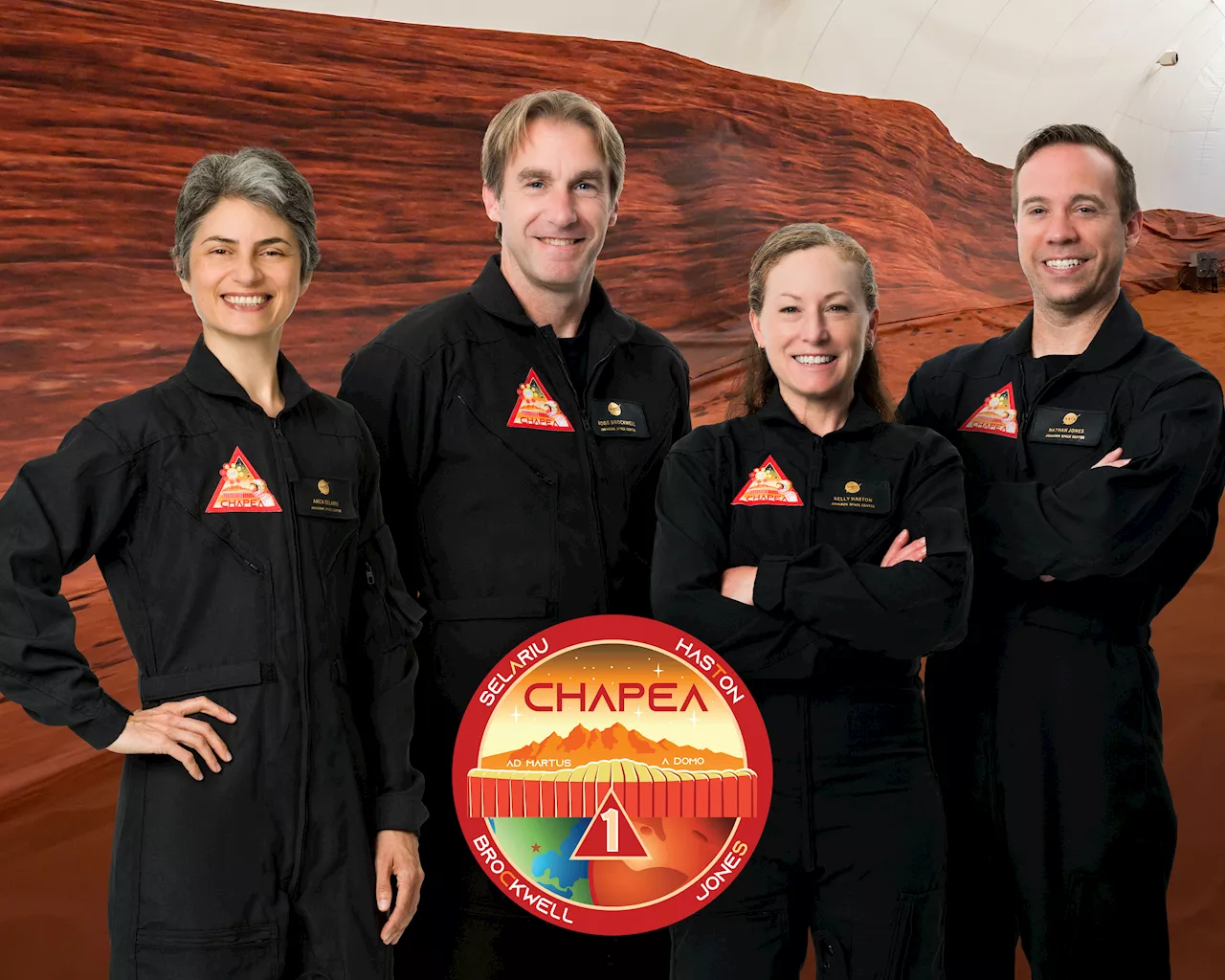The NASA crew spent much of their time on simulated spacewalks, or 'Marswalks' as they called them.
A NASA crew has emerged from a simulated Mars environment after spending more than 12 months inside the 3D-printed habitat. Kelly Haston, Anca Selariu, Ross Brockwell and Nathan Jones entered the Mars simulation on June 25, 2023, becoming the first crew of NASA’s Crew Health and Performance Exploration Analog project.The four volunteers lived and worked inside the 17,000-square-foot space to simulate a mission to the red planet.
They also grew vegetables to supplement their provisions and maintained the habitat and their equipment. They experienced challenges that a Mars crew would likely face, like limited resources, extreme isolation and 22-minute delays in communication with their home planet.
United Kingdom Latest News, United Kingdom Headlines
Similar News:You can also read news stories similar to this one that we have collected from other news sources.
 Volunteer Crew to Exit NASA’s Simulated Mars Habitat After 378 DaysThe four volunteers who have been living and working inside NASA’s first simulated yearlong Mars habitat mission are set to exit their ground-based home on
Volunteer Crew to Exit NASA’s Simulated Mars Habitat After 378 DaysThe four volunteers who have been living and working inside NASA’s first simulated yearlong Mars habitat mission are set to exit their ground-based home on
Read more »
 This crew is leaving their simulated ‘Martian’ habitat after 378 daysDT Video
This crew is leaving their simulated ‘Martian’ habitat after 378 daysDT Video
Read more »
 NASA's wants new ideas for its troubled Mars Sample Return missionBrett is curious about emerging aerospace technologies, alternative launch concepts, military space developments and uncrewed aircraft systems. Brett's work has appeared on Scientific American, The War Zone, Popular Science, the History Channel, Science Discovery and more.
NASA's wants new ideas for its troubled Mars Sample Return missionBrett is curious about emerging aerospace technologies, alternative launch concepts, military space developments and uncrewed aircraft systems. Brett's work has appeared on Scientific American, The War Zone, Popular Science, the History Channel, Science Discovery and more.
Read more »
 NASA Exploring Alternative Mars Sample Return MethodsNASA is moving forward with 10 studies to examine more affordable and faster methods of bringing samples from Mars’ surface back to Earth as part of the
NASA Exploring Alternative Mars Sample Return MethodsNASA is moving forward with 10 studies to examine more affordable and faster methods of bringing samples from Mars’ surface back to Earth as part of the
Read more »
 NASA Watches Mars Light Up During Epic Solar StormIn addition to producing auroras, a recent extreme storm provided more detail on how much radiation future astronauts could encounter on the Red Planet.
NASA Watches Mars Light Up During Epic Solar StormIn addition to producing auroras, a recent extreme storm provided more detail on how much radiation future astronauts could encounter on the Red Planet.
Read more »
 NASA watches Mars light up during epic solar stormIn addition to producing auroras, a recent extreme storm provided more detail on how much radiation future astronauts could encounter on the Red Planet.
NASA watches Mars light up during epic solar stormIn addition to producing auroras, a recent extreme storm provided more detail on how much radiation future astronauts could encounter on the Red Planet.
Read more »
